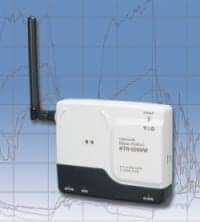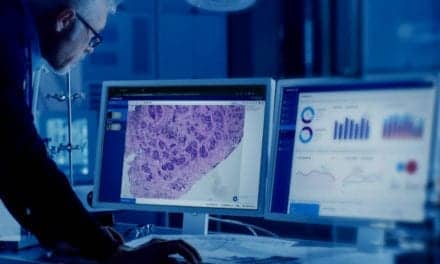FDA has permitted marketing of the first medical device to use artificial intelligence (AI) to detect greater than a mild level of the eye disease diabetic retinopathy in adults who have diabetes. IDx-DR from IDx LLC, Coralville, Iowa, is a software program that uses an artificial intelligence algorithm to analyze images of the eye taken with a retinal camera called the Topcon NW400.
“FDA’s authorization to market IDx-DR is a historic moment that has the potential to launch a transformation in the way US healthcare is delivered,” says Michael Abràmoff, MD, PhD, founder and president of IDx. “Autonomous AI systems have massive potential to improve healthcare productivity, lower healthcare costs, and improve accessibility and quality. As the first of its kind to be authorized for commercialization, IDx-DR provides a roadmap for the safe and responsible use of AI in medicine.”
Diabetic retinopathy occurs when high levels of blood sugar lead to damage in the blood vessels of the retina, the light-sensitive tissue in the back of the eye. Diabetic retinopathy is the most common cause of vision loss among the more than 30 million Americans living with diabetes, and the leading cause of vision impairment and blindness among working-age adults.
“Early detection of retinopathy is an important part of managing care for the millions of people with diabetes, yet many patients with diabetes are not adequately screened for diabetic retinopathy since about 50% of them do not see their eye doctor on a yearly basis,” says Malvina Eydelman, MD, director of the division of ophthalmic, and ear, nose, and throat devices at FDA’s Center for Devices and Radiological Health. “Today’s decision permits the marketing of a novel artificial intelligence technology that can be used in a primary care doctor’s office. FDA will continue to facilitate the availability of safe and effective digital health devices that may improve patient access to needed healthcare.”
IDx-DR is the first device authorized for marketing that provides a screening decision without the need for a clinician to also interpret the image or results, which makes it usable by healthcare providers who may not normally be involved in eye care. A doctor uploads the digital images of the patient’s retinas to a Cloud server on which IDx-DR software is installed. If the images are of sufficient quality, the software provides the doctor with one of two results:
- More than mild diabetic retinopathy detected: refer to an eye care professional.
- Negative for more than mild diabetic retinopathy; rescreen in 12 months.
If a positive result is detected, patients should see an eye care provider for further diagnostic evaluation and possible treatment as soon as possible.
FDA evaluated data from a clinical study of retinal images obtained from 900 patients with diabetes at 10 primary care sites. The study was designed to evaluate how often IDx-DR could accurately detect patients with more than mild diabetic retinopathy. In the study, IDx-DR was able to correctly identify the presence of more than mild diabetic retinopathy 87.4% of the time, and was able to correctly identify those patients who did not have more than mild diabetic retinopathy 89.5% of the time.
IDx-DR was reviewed under FDA’s de novo premarket review (510(k) pathway, a regulatory pathway for some low- to moderate-risk devices that are novel and for which there is no prior legally marketed device. IDx-DR was granted breakthrough device designation, meaning FDA provided intensive interaction and guidance to the company on efficient device development, to expedite evidence generation and the agency’s review of the device.






